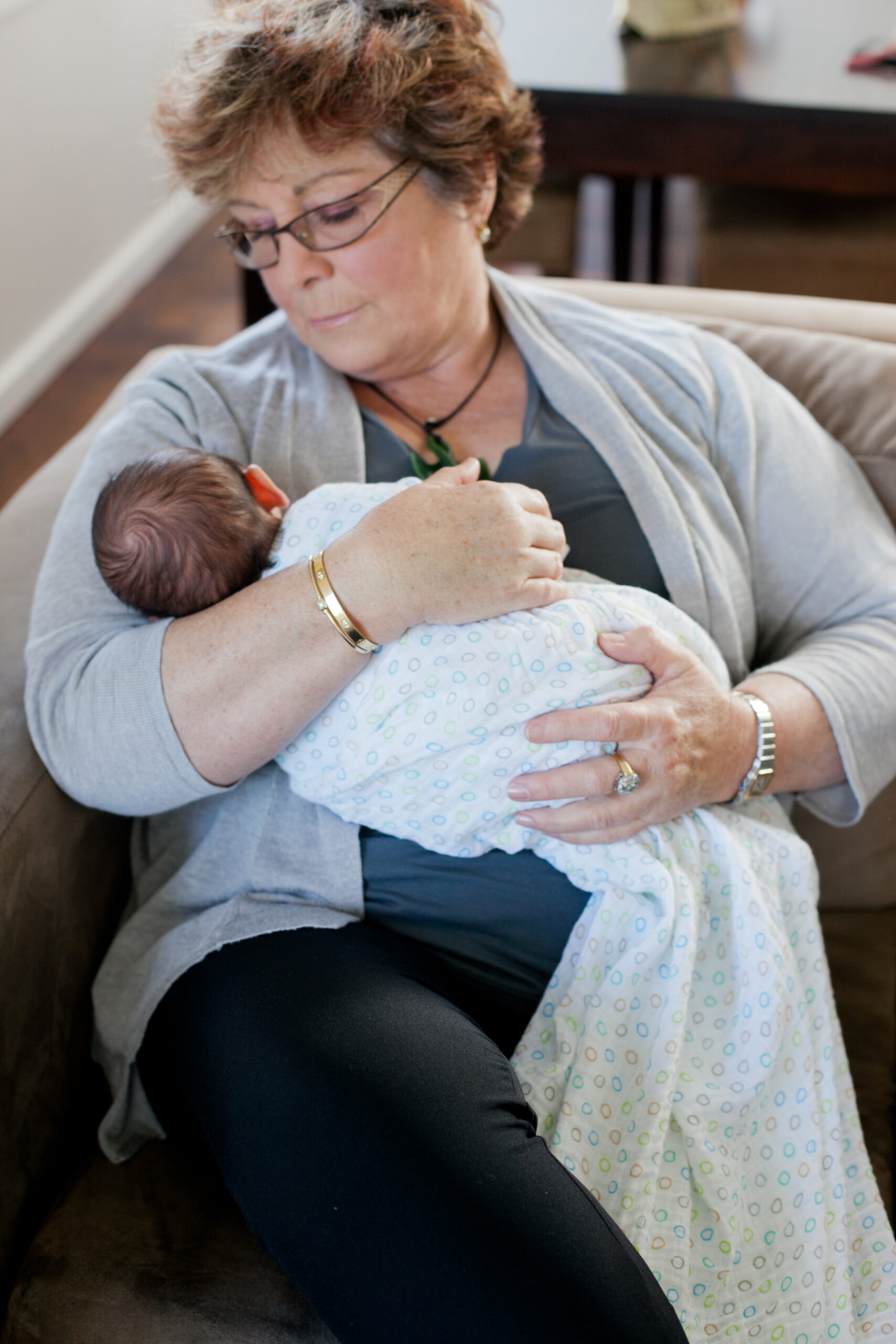New mums often report that their baby is quiet and sleepy while they’re in hospital recovering from the birth, but the moment they get home they won’t stop crying.
Trying to figure out why your baby is crying along with everything else that’s going on is not easy, and the most stoic of new parents can be reduced to tears themselves.
Dorothy Waide is a former Karitane nurse who has worked with new mothers and babies for more than two decades. She will be giving talks on how to calm an unsettled baby at The Baby Show in Auckland from August 17-19.
She says the main reason most newborn babies become unsettled once they’re home is because they’re no longer benefiting from a range of nutrients that were passed through their mother’s placenta.
“What a lot of people don’t realise is the placenta passes over all of these yummy, gorgeous things from the mother, like the mother’s melatonin. Very quickly these leave the baby’s body and these babies wake up all of a sudden. So these nice quiet babies come home and are crying all the time and we automatically think it’s what we’re doing. It’s not. It’s the next stage of having a newborn baby.”
On top of that newborns easily become overtired and overstimulated, she says. Their parents are inundated with visitors, overwhelmed with information and unsure of what they’re doing so it’s easy for them to miss signs that their baby is getting tired and scratchy.
Simply being aware can make it a little easier to cope, Dorothy says.
But there are other reasons that may need to be taken into consideration too.
Babies can become unsettled if they’re not feeding well, if something being passed through their milk does not agree with them, or if they’re sleeping poorly, she says. Here are some red flags to be aware of, as well as a step-by-step guide on how to calm your baby in your arms:

1. Is the baby feeding properly?
First things first, make sure your baby is not hungry or taking in more air than milk during feeds. Taking in air causes them to become gassy and gives them a sore tummy.
“With breastfeeding mothers the first thing I look at is the latching on and how the mother is holding the baby,” Dorothy says.
To take a good feed and minimise taking in air the baby needs to be latched on to the breast correctly. Mothers can also make the mistake of lying their baby straight across their laps, when the baby needs to be slightly elevated, with their bottom lower than their head.
“For those colicky or reflux babies, in particular, that can make a huge difference.”
2. Is the mother looking after herself?
Dorothy was shocked when she first began working with Kiwi mothers to find they were encouraged to take vitamins and supplements in pregnancy, but not after the birth.
“This is a time when they need them more than ever,” she exclaims. “They’ve just gone through birth, they’re sleep deprived, they’ve got a baby that’s crying all the time and they’re not even taking a multi vitamin. I encourage a multi vitamin and omega 3s. If you’ve got a really inconsolable baby I also encourage probiotics, breastfeeding cookies and teas, fenugreek.”
Upping your nutrients not only enhances your wellbeing and ability to cope, it also improves the quality of your milk for breastfeeding mothers.
“Look after yourself, take supplements and eat a healthy, balanced diet with lots of carbohydrates and proteins,” Dorothy advises.
3. In breastfeeding mothers, eliminate food groups that may be upsetting your baby’s tummy
You may be eating something that is going through your breast milk and upsetting your baby’s tummy.
If Dorothy suspects an intolerance she works with mothers to eliminate food groups one at a time, for 72 hours at a time.
“I don’t encourage the mother to take everything out,” she says. “The first three food groups I do is dairy and egg, then wheat and gluten and then sugar.”
If each elimination makes no difference you can be confident it’s not what you’re eating that’s causing a problem.

Dorothy ‘engulfing’ a newborn baby.
4. How to calm your baby using Dorothy’s ‘engulf’ hold
One of the biggest mistakes parents make is rocking their baby in their arms to soothe them and help them off to sleep.
“Try not to do anything in your arms that you can’t replicate in a cot or bassinette,” Dorothy says. “Because the moment you transfer them they go from movement to stillness and they wake up. I teach mothers what I call ‘engulfing’.”
To engulf your baby:
The engulf hold provides as much body contact as possible so that your baby gets a sense of being ‘contained’, like they’re in the womb, which is hugely reassuring for them.
Hold your baby so his head is resting on the upper region of your non-dominant arm. For mothers, this ensures that baby is not too close to the breast, so as not to draw baby to feeding again.
Draw your baby in close so that you are pressed tummy-to-tummy with his face nestled just below the top of your shoulder.
Wrap your non-dominant arm across your baby’s shoulder and take hold of their upper arm and shoulder to firmly support him.
Your other hand will be on his bottom with his legs tucked up into your body and supported by your forearm.
Don’t talk to your baby or make eye contact.
“Let’s say you engulf your baby and they cry for a minute in your arms,” Dorothy continues. “Then I would do what I call cupping and shushing.”
Cupping is when you cup your palm and shunt their bottom – it’s a stronger motion than a pat – to reassure your baby of your presence and mimic the rhythm of your baby’s heartbeat. Shushing is a strong, long shhhh sound that you make three times and then stop.
“At the end of that if they’re still crying just stop, because they’re not ready to sleep, but you’re there and your presence and your touch is powerful. Sitting and engulfing a baby is powerful.”
You can also reassure your baby with your touch when they’re in their bed, by placing a reassuring hand both under their bottom and on their chest.


